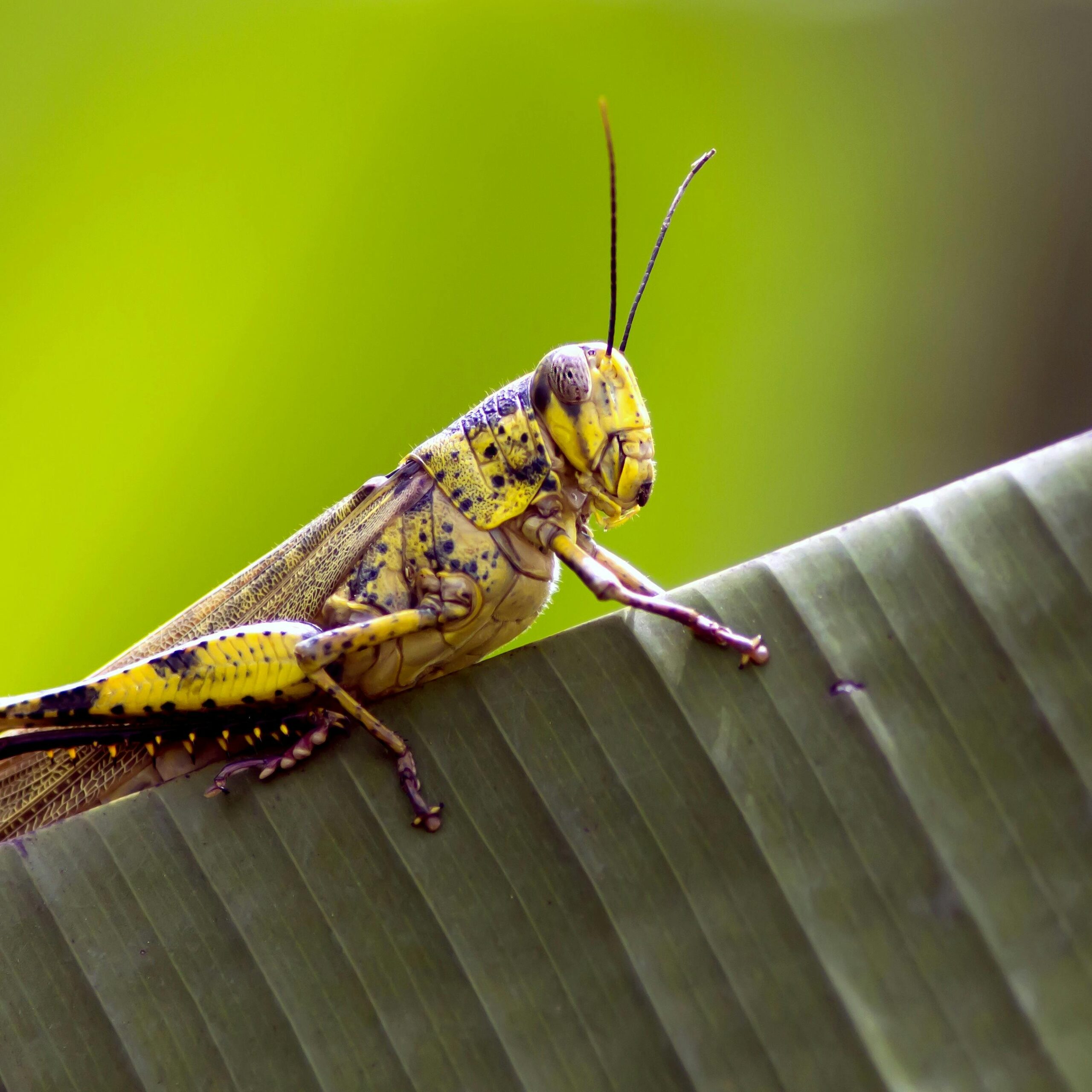All About Crickets
Crickets are nocturnal insects known for their distinctive chirping sounds, which they produce by rubbing their wings together. While they play a vital role in ecosystems by contributing to nutrient cycling and serving as prey for various animals, crickets can become pests when they invade homes in search of warmth and moisture. Managing cricket populations is important to prevent property damage and maintain comfort in your living space.
What are Crickets?
Crickets belong to the family Gryllidae and are characterized by their leaping ability, long antennae, and musical chirping. They include approximately 2,400 species and are known for their distinctive acoustic signals.
Crickets undergo incomplete metamorphosis with three life stages: egg, nymph, and adult. They are omnivorous, feeding on a variety of plant materials and dead insects. Crickets are primarily nocturnal and use their chirping for communication and mating.
How to Identify Crickets
Appearance:
- Color: Crickets come in various colors, including brown, black, and green, depending on the species.
- Size: They range from 0.5 to 2 inches in length, with variations among species.
- Antennae: Long and threadlike, often longer than their body.
- Wings: Crickets typically have two pairs of wings; the forewings are stiff and leathery, while the hind wings are membranous.
- Legs: Powerful hind legs adapted for jumping.
- Body Shape: Elongated body with three pairs of legs and a pair of long, slender cerci (sensory appendages) at the rear.
- Distinguishing Features: Notable for their chirping sound produced by rubbing their wings together.
Similar Pests: Distinguish crickets from similar insects such as grasshoppers by their longer antennae and different chirping sounds. Crickets are also different from katydids, which have more leaf-like wings.
Activity and Seasonality
Active Seasons: Crickets are most active at night and often seek indoor shelter during colder months.
Lifecycle: Crickets undergo three life stages: egg, nymph, and adult. Their lifespan ranges from several weeks to months, depending on species and environmental conditions.
Where to Find Crickets in or Around Your House
- Common Habitats: Crickets are commonly found in moist, dark environments both indoors and outdoors. They prefer areas like basements, crawlspaces, and behind furniture or appliances.
- Specific Hiding Spots: Indoors, look for crickets in areas with high moisture levels and clutter. Outdoors, they are often found in gardens, under mulch, and near compost piles.
How to Get Rid of Crickets
- Immediate Action: Use a vacuum to remove crickets and their eggs. Clean up food sources and moisture to make your home less attractive to them.
- Professional Treatments: For severe infestations, contact a pest control professional to conduct a thorough inspection and implement targeted treatment solutions.
- DIY Methods: Reduce moisture with dehumidifiers, fix leaks, and seal entry points around your home. Consider using yellow or sodium vapor light bulbs outdoors to reduce attraction.
How to Prevent Crickets
- Reduce Moisture: Address and fix sources of excess moisture around your home to make it less attractive to crickets. This includes repairing leaks and ensuring proper ventilation in areas like basements and crawl spaces.
- Seal Entry Points: Close off potential entry points around doors, windows, and other gaps to prevent crickets from entering your home.
- Manage Outdoor Lighting: Replace outdoor lighting with yellow or sodium vapor bulbs, which are less attractive to crickets than traditional white lights.
- Regular Yard Maintenance: Keep your yard clean by mowing the lawn, weeding plant beds, and moving woodpiles away from the house. This reduces hiding spots and food sources for crickets.
- Clean Indoor Areas: Maintain cleanliness by vacuuming regularly and removing any fabric or materials that crickets might feed on. Store clothing and other fabric items in sealed containers.
- Professional Assistance: If you suspect a cricket infestation or need help implementing preventive measures, contact a licensed pest control professional. They can provide a thorough inspection and recommend appropriate control strategies.
Conclusion
Crickets are nocturnal insects that can become pests when they invade homes seeking warmth and moisture. Effective management involves identifying their hiding spots, reducing moisture, and seeking professional help if needed.
If you’re dealing with a cricket infestation, contact Pest Control Consultants today for a free consultation and effective treatment plan.
